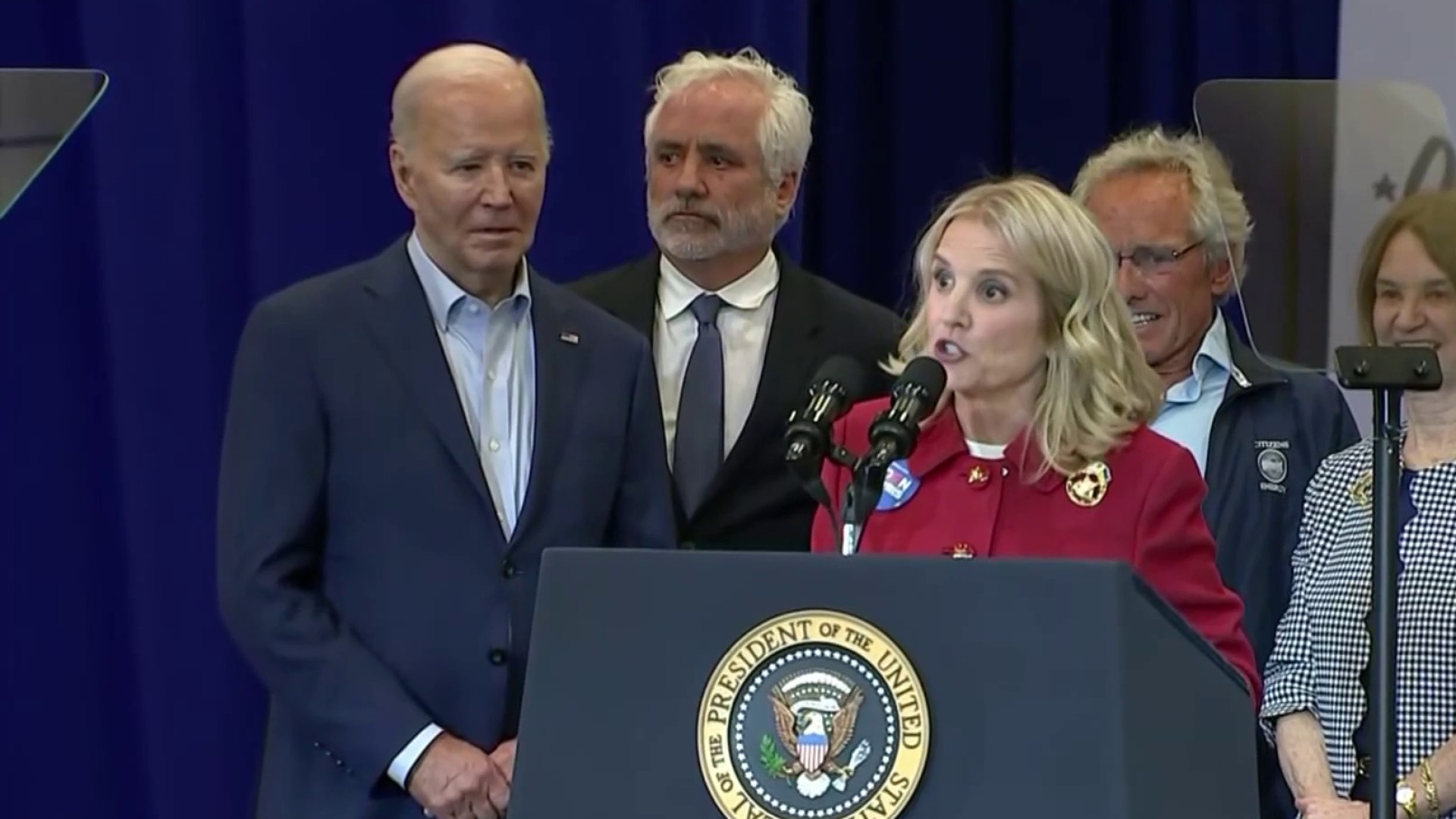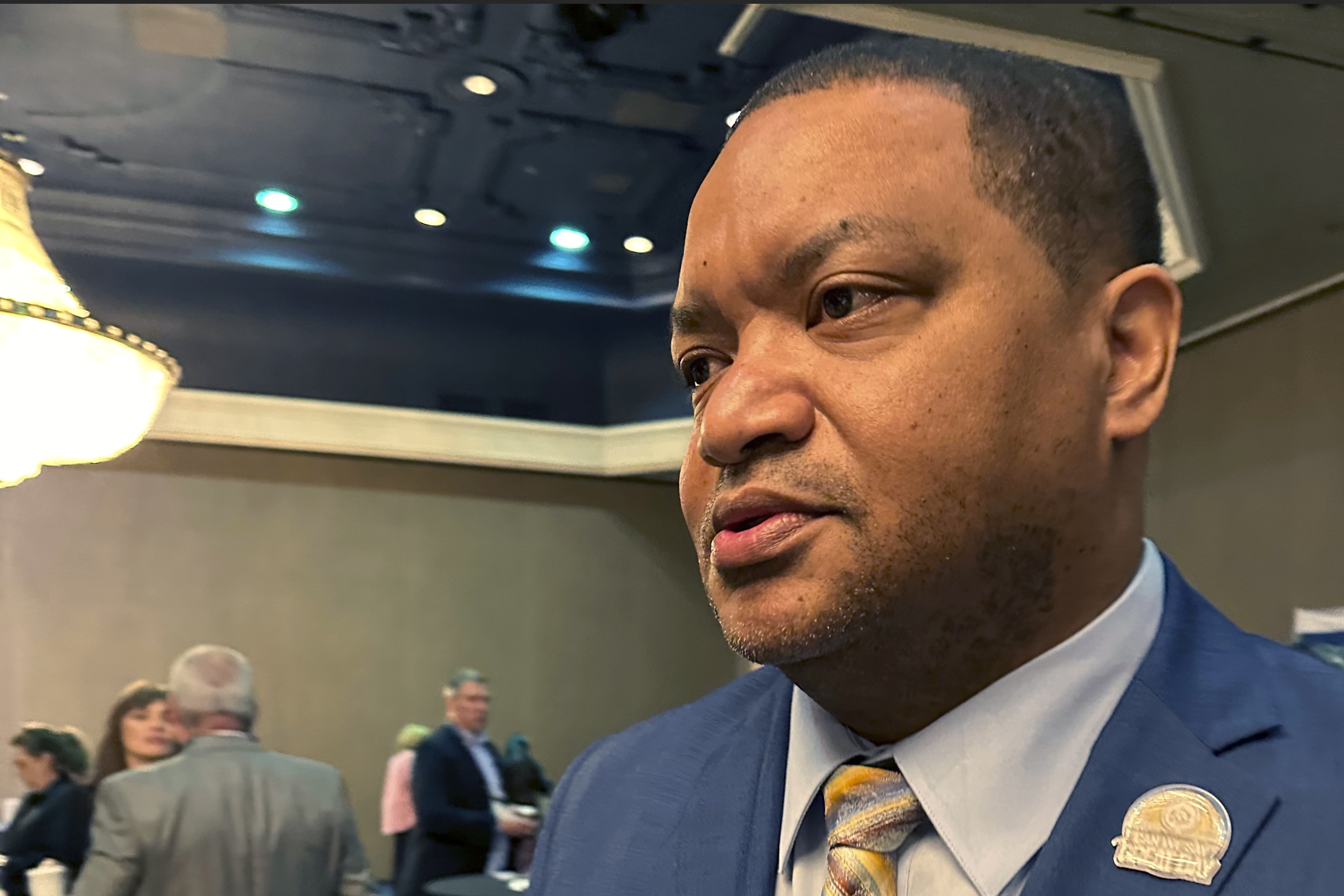President Joe Biden touted his $1 trillion infrastructure plan Wednesday as an eventual fix for the nation's inflation and supply chain woes — if Americans just have the patience to wait for the construction to begin.
The president toured the Port of Baltimore at the start of what is likely to be a national tour to showcase his signature legislation that cleared Congress last week and that he intends to sign on Monday. He declared that the spending would improve transportation of products and supplies from overseas and within the U.S. to help lower prices, reduce shortages and add union jobs.
That message is becoming more critical as the government reported Wednesday that consumer prices in October climbed 6.2% from a year ago. Inflation has intensified instead of fading as the economy reopened after the coronavirus pandemic, creating a major challenge for Biden whose administration repeatedly said that the price increases were temporary. During remarks at the port, he acknowledged that consumer prices remained “too high."
“Everything from a gallon of gas to a loaf of bread costs more,” he said. “We still face challenges and we have to tackle them ... we have to tackle them head on.”
Get Philly local news, weather forecasts, sports and entertainment stories to your inbox. Sign up for NBC Philadelphia newsletters.
Higher prices have eaten into wages and turned public sentiment on the economy against Biden in polls. One of the obstacles for reducing inflation has been backlogged ports with ships waiting to dock at major transit hubs, causing shortages and leaving some store shelves depleted ahead of the holiday shopping season.
“Many people remain unsettled about the economy and we all know why,” Biden said.
He offered his infrastructure plan as the solution, albeit one that will take time to manifest. Better infrastructure — whether roads, bridges, ports or whatever — would give more capacity and resiliency for the supply chain. There would be more capacity to unload ships and move goods, which in turn would reduce price pressures and shortages.
Politics
Biden said the infrastructure spending would create jobs paying $45 an hour, nearly 50% above the current national average. It would create a wealth of jobs to fix aging pipes, bridges and roads, and boost clean energy and cybersecurity. And most wouldn't require college degrees.
"This is a once in a generation investment,” he said.
The president pointed to Baltimore’s port as a blueprint on how to reduce shipping bottlenecks that have held back the economic recovery. The facility is adding container cranes as well as a 50-foot berth where ships can be unloaded. Baltimore’s port is also benefiting from grants to upgrade the Howard Street Tunnel, a brick-lined underpass for trains that opened in 1895. The tunnel would be expanded so that shipping containers could be double-stacked on railcars, making it easier to move goods out of the port.
The president, who consulted with the CEOs of Walmart, Target, FedEx and UPS on Tuesday, emphasized that these investments are part of a national effort to relieve supply chain bottlenecks in ways that can aid broader growth.
His administration also announced new investments to reduce congestion at the Port of Savannah in Georgia, nearly a month after the administration helped broker a deal for the Port of Los Angeles to operate nonstop.
The president has been trying to explain that the port congestion shows just how strong the economic rebound from the pandemic has been. A forecast by the National Retail Federation suggests a record level of imports this year.
The inflation phenomenon is also global in nature, with Germany and China recently reporting high levels.
The president made his case Wednesday in a city of nearly 600,000 people that supports him. Nearly 90% of voters in Baltimore backed Biden in last year’s election. The president also stopped in the city for a CNN town hall on Oct. 21.
Baltimore embodies the complexities of an increasingly diverse America at a time of heated national politics.
Many Americans have seen a TV version of the city's poverty, crime, political corruption and vacant row houses on shows such as HBO’s “The Wire.” Unrest following the 2015 death of Freddie Gray from injuries in a police van helped to propel a national movement for respecting the rights and lives of Black Americans.
But Baltimore also contains deep pockets of wealth and prosperity in what is a microcosm of the broader inequality confronting the nation. There are the mansions of the Guilford neighborhood, elite private schools, celebrated restaurants and the prestige of Johns Hopkins University.
As president, Donald Trump slammed the majority Black city on Twitter frequently, calling it “the WORST IN NATION.” But while Trump scorned Baltimore, Biden sees a test case for his agenda that goes beyond the ports. His child tax credits are sending thousands of dollars to families in a city with a child poverty rate north of 30%. Work has begun to renovate and modernize the historic Penn Station, possibly improving rail transit across the Northeast.



